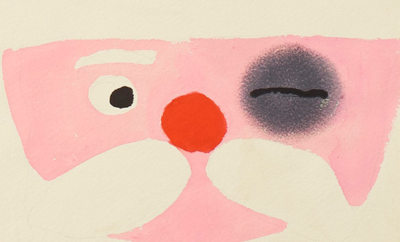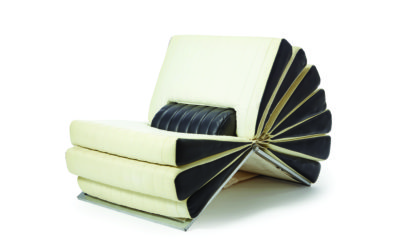Use your ← → (arrow) keys to browse
SAGGING AND SLUMPING
Frances and Michael Higgins—or “higgins,” as they collectively signed their work— revitalized the studio practice of glass fusing, a technique that had been supplanted by the popularity of glass blowing. Clear sheets of glass were coated in enamels of forty basic colors or decorated with colored pieces of glass, with the resulting designs matched or contrasted with other colors to produce hundreds of secondary colors when fused in glass “sandwiches.” The Higginses embraced a matter-of-fact vocabulary to describe their processes: glass heated at high temperatures could “slump” over a mold or be allowed to “sag.” The Higginses’ work began to glisten and gleam in retail in the 1950s, appearing in department stores such as Marshall Field’s and Bloomingdale’s. In 1957 the pair began collaborating with the Dearborn Glass Company to develop “Higginsware,” an array of domestic products in which color and decoration were infused into the very material of vases, ashtrays, and their famous rondelays (circular discs or square tiles fastened together to create decorative hangings, room dividers, and the like). Though Higginsware garnered the couple national acclaim, they returned to private studio work in 1966, favoring the artistic independence that had been sacrificed in adapting to mass production.
Use your ← → (arrow) keys to browse
 LOT 617 Treadway Toomey Auctions 20th Century Art & Design sale, March 5, 2016: Mobile by Frances and Michael Higgins, 1960s. Estimated at $1,200–$1,500, the piece sold for $1,900. | TREADWAY GALLERY, CINCINNATI, OHIO
LOT 617 Treadway Toomey Auctions 20th Century Art & Design sale, March 5, 2016: Mobile by Frances and Michael Higgins, 1960s. Estimated at $1,200–$1,500, the piece sold for $1,900. | TREADWAY GALLERY, CINCINNATI, OHIO












